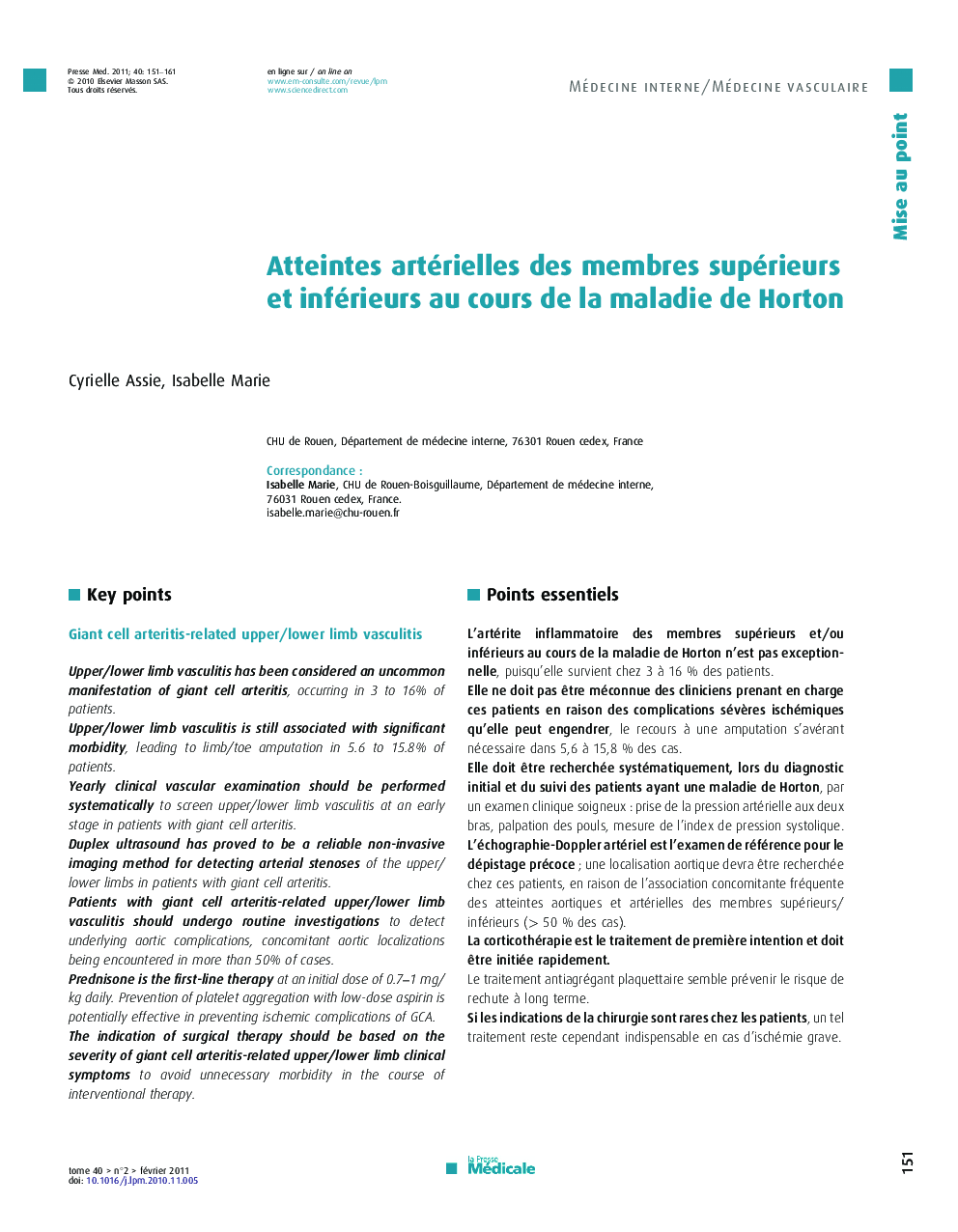| کد مقاله | کد نشریه | سال انتشار | مقاله انگلیسی | نسخه تمام متن |
|---|---|---|---|---|
| 3820183 | 1246479 | 2011 | 11 صفحه PDF | دانلود رایگان |

Points essentielsL’artérite inflammatoire des membres supérieurs et/ou inférieurs au cours de la maladie de Horton n’est pas exceptionnelle, puisqu’elle survient chez 3 à 16 % des patients.Elle ne doit pas être méconnue des cliniciens prenant en charge ces patients en raison des complications sévères ischémiques qu’elle peut engendrer, le recours à une amputation s’avérant nécessaire dans 5,6 à 15,8 % des cas.Elle doit être recherchée systématiquement, lors du diagnostic initial et du suivi des patients ayant une maladie de Horton, par un examen clinique soigneux : prise de la pression artérielle aux deux bras, palpation des pouls, mesure de l’index de pression systolique.L’échographie-Doppler artériel est l’examen de référence pour le dépistage précoce ; une localisation aortique devra être recherchée chez ces patients, en raison de l’association concomitante fréquente des atteintes aortiques et artérielles des membres supérieurs/inférieurs (> 50 % des cas).La corticothérapie est le traitement de première intention et doit être initiée rapidement.Le traitement antiagrégant plaquettaire semble prévenir le risque de rechute à long terme.Si les indications de la chirurgie sont rares chez les patients, un tel traitement reste cependant indispensable en cas d’ischémie grave.
Key pointsUpper/lower limb vasculitis has been considered an uncommon manifestation of giant cell arteritis, occurring in 3 to 16% of patients.Upper/lower limb vasculitis is still associated with significant morbidity, leading to limb/toe amputation in 5.6 to 15.8% of patients.Yearly clinical vascular examination should be performed systematically to screen upper/lower limb vasculitis at an early stage in patients with giant cell arteritis.Duplex ultrasound has proved to be a reliable non-invasive imaging method for detecting arterial stenoses of the upper/lower limbs in patients with giant cell arteritis.Patients with giant cell arteritis-related upper/lower limb vasculitis should undergo routine investigations to detect underlying aortic complications, concomitant aortic localizations being encountered in more than 50% of cases.Prednisone is the first-line therapy at an initial dose of 0.7–1 mg/kg daily. Prevention of platelet aggregation with low-dose aspirin is potentially effective in preventing ischemic complications of GCA.The indication of surgical therapy should be based on the severity of giant cell arteritis-related upper/lower limb clinical symptoms to avoid unnecessary morbidity in the course of interventional therapy.
Journal: La Presse Médicale - Volume 40, Issue 2, February 2011, Pages 151–161